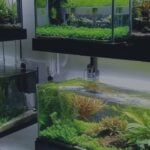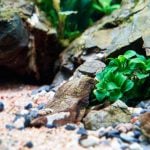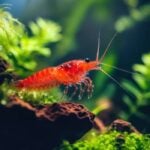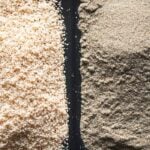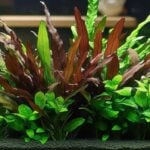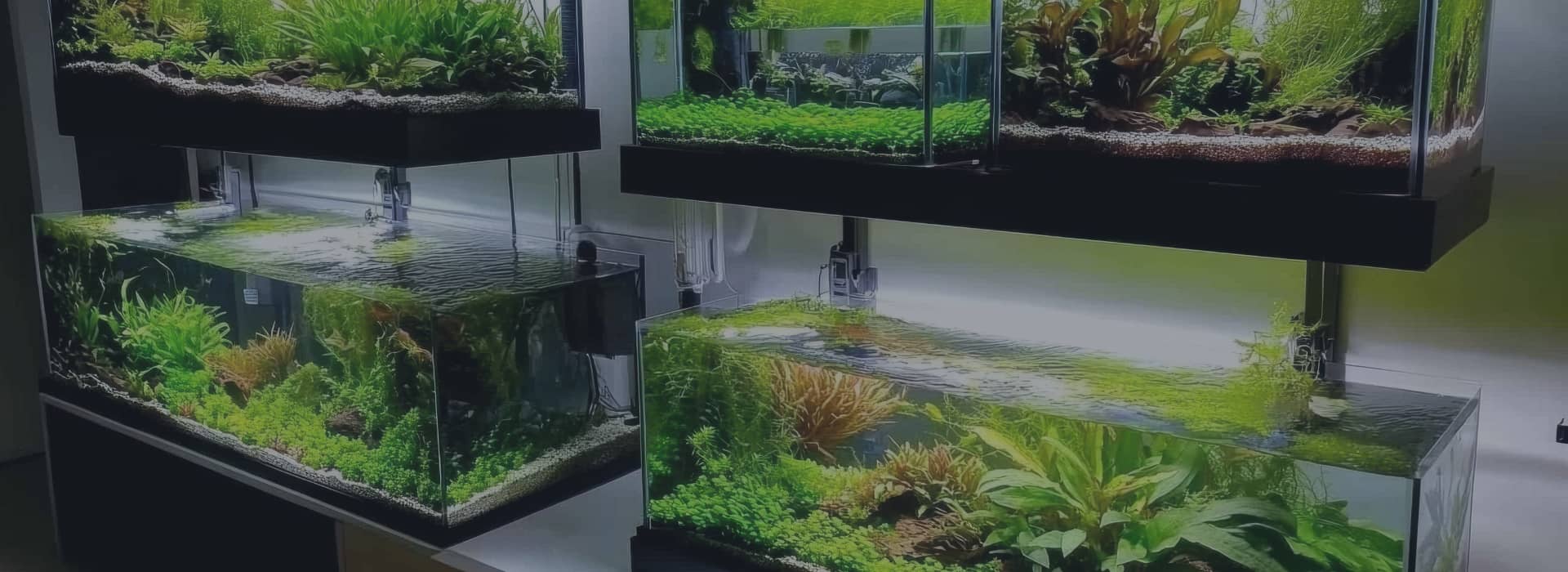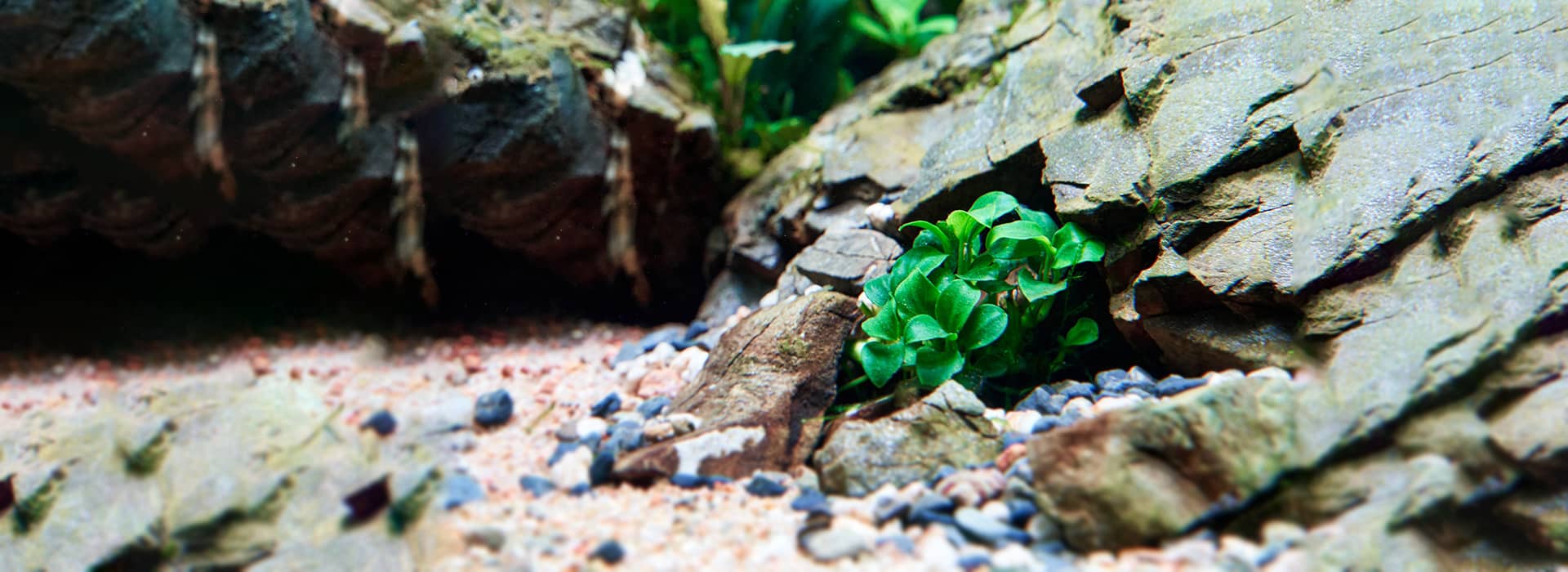Cryptocoryne wendtii, commonly known as Wendt’s water trumpet, is a versatile and popular plant in the aquascaping community.
Originating from Sri Lanka, this aquatic plant has made its way into the hearts and aquariums of hobbyists around the world due to its hardy nature and the beautiful touch it adds to underwater landscapes.
Introduction to Cryptocoryne wendtii
Cryptocoryne Wendtii thrives in a wide range of conditions, making it an excellent choice for both beginners and experienced aquarists.
It is available in various color forms, such as green, red, and brown, and can grow in low- and high-light environments. This adaptability is one of the reasons why it’s a staple in many planted tanks.
Care and Tank Setup
Consider the following factors when setting up a tank to ensure the health and growth of this plant:
Tank Size
A minimum of 10 gallons (38 liters) is recommended to provide enough space for growth.
Substrate
A nutrient-rich substrate is beneficial for root development.
Water Parameters
The plant prefers a temperature range of 72-82°F (22° – 28° C) and a pH of 6.0 to 8.0. It is adaptable to soft and hard water conditions.
Lighting
Moderate lighting is sufficient, but the plant will grow under high light. Full-spectrum LED lighting is ideal.
Fertilization
While not necessary, the plant can benefit from liquid fertilizers and CO₂ injection.
Planting Tips
Cryptocoryne wendtii should be planted with care to avoid damaging the roots. Planting it in clusters is best to create a natural and lush appearance. Over time, the plant will propagate on its own, sending out runners that will develop into new plants.
How to Prevent Crypt Melts?
Cryptocoryne melting, often called “crypt melt,” is a common issue aquarists face when introducing Cryptocoryne plants into a new aquarium environment.
This phenomenon occurs when plants’ leaves begin to decay, usually due to adapting to a new set of water parameters or transitioning from an emersed (grown above water) to a submerged (grown underwater) state.
To prevent crypt melt, consider the following tips:
1. Gradual Introduction: Slowly acclimate your Cryptocoryne to the aquarium conditions by floating them in the tank water, sealed in the bag they came in, for about 30 minutes. This helps them gradually adjust to the temperature and pH.
2. Trimming: Before planting, trim off emersed-grown or damaged leaves. This encourages the plant to focus its energy on growing new, healthy, submerged leaves better adapted to underwater life.
3. Consistent Water Parameters: Ensure that the water parameters such as temperature, pH, and hardness are stable. Sudden changes can stress the plant and cause melting.
4. Gentle Water Changes: Perform regular, small water changes rather than large, infrequent ones. This helps maintain a stable environment and reduces stress on the plants.
5. Nutrient-Rich Substrate: Plant your Cryptocoryne in a nutrient-rich substrate or use root tabs to provide essential nutrients, which can help prevent melting by supporting strong root development.
Aquascaping with Cryptocoryne wendtii
Cryptocoryne Wendtii is a versatile plant that can be used in various ways in an aquascape:
Foreground: Shorter varieties can be placed in the front to create a carpeting effect.
Midground: Standard varieties can serve as a transition between the foreground and background plants.
Background: Taller varieties can create a lush backdrop for the aquarium.
Ideal Fish Tankmates
When considering fish species to pair with this plant, choose those that will thrive in similar water conditions and won’t disturb the plant’s growth, such as the following:
1. Betta Fish: Known for their vibrant colors and flowing fins, bettas are a popular choice for planted tanks. They prefer the calm waters that suit Crypts well.
2. Small and peaceful tetras: The black skirt tetra or neons are excellent companions for Cryptocoryne wendtii. They add movement and color without disturbing the plants.
3. Small Peaceful Cichlids: Species like ram cichlids can coexist with Crypts, as they generally don’t uproot plants and appreciate the cover provided by the foliage.
4. Dwarf Gouramis: These gentle fish are another suitable choice, enjoying the shelter of the Cryptocoryne Wendtii’s leaves.
5. Loaches: Bottom dwellers like loaches can be good companions, as they often forage around the substrate without harming the plant roots.
Companion Plants
Here are some excellent plant choices that harmonize well with the lush foliage of Cryptocoryne wendtii.
1. Anubias Species: Anubias plants are a great match for Cryptocoryne wendtii due to their similar care requirements. They thrive in low to medium light and can be attached to driftwood or rocks, adding vertical interest to your aquascape.
2. Java Fern (Microsorum pteropus): Java fern is another low-maintenance plant that pairs well with Cryptocoryne wendtii. Its long, flowing leaves contrast nicely with the shorter, broader leaves of the Crypts, creating a dynamic texture in the aquarium.
3. Amazon Sword (Echinodorus spp.): Amazon sword plants are an excellent backdrop that complements. Their tall, broad leaves provide a lush green background, making the colors of Wendt’s water trumpet stand out in the midground.
4. Dwarf Hairgrass (Eleocharis parvula): If you’re aiming for a ‘nature aquarium’ style, dwarf hairgrass can create a beautiful carpet effect in the foreground, leading the eye towards the Wendt’s water trumpet in the midground.
5. Staurogyne repens: This hardy foreground plant can form a dense carpet, offering a nice contrast to the taller Cryptocoryne wendtii. It requires moderate lighting and can grow well without CO2 supplementation.
6. Bucephalandra: Like Anubias, Bucephalandra species can be attached to hardscape materials. They come in various colors and textures, which can complement the green hues of Crypts.
7. Floating Plants: Incorporating floating plants like Duckweed or Frogbit can help balance the light in the aquarium and provide a layered look from top to bottom. These plants can also help manage nutrient levels in the water, benefiting all plants in the tank.
8. Mosses: Various types of moss, such as Java moss or Christmas moss, can be used on driftwood or stones to add a soft texture and depth to the aquascape. They also provide hiding spots for fish and invertebrates.
When selecting companion plants for Wendt’s water trumpet, consider the overall design and balance of your aquascape. Aim for a variety of heights, textures, and colors to create a natural and aesthetically pleasing underwater landscape.
Bring Life and Color to your Planted Tank
Cryptocoryne wendtii is a beautiful and easy-to-care-for plant that can enhance the biodiversity and aesthetic of any freshwater aquarium.
Its various types and colors offer numerous possibilities for creating a stunning underwater landscape. Whether you are a novice or an expert, Cryptocoryne Wendtii is a plant that can bring life and color to your aquatic world.
